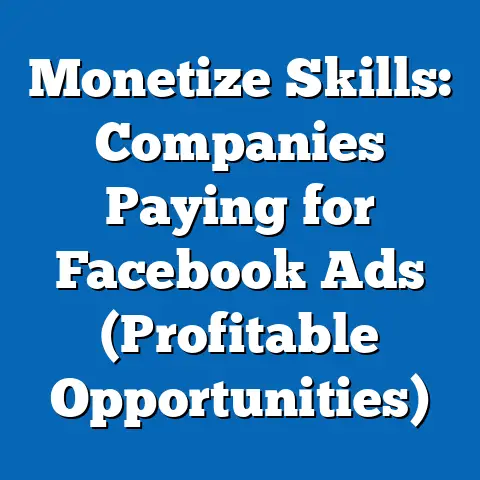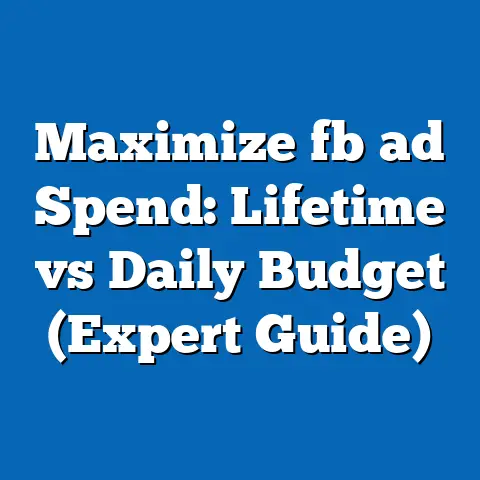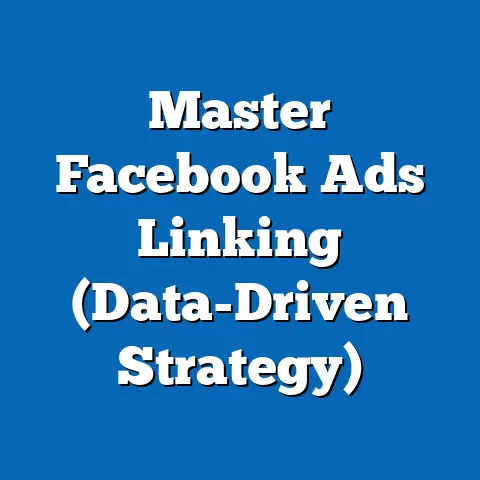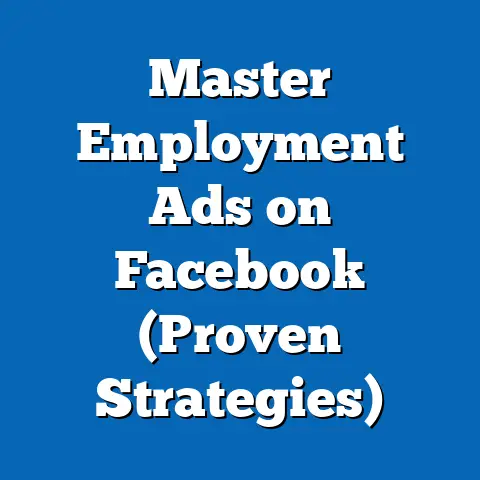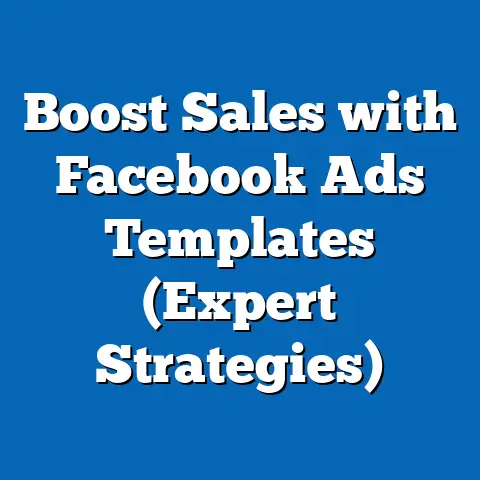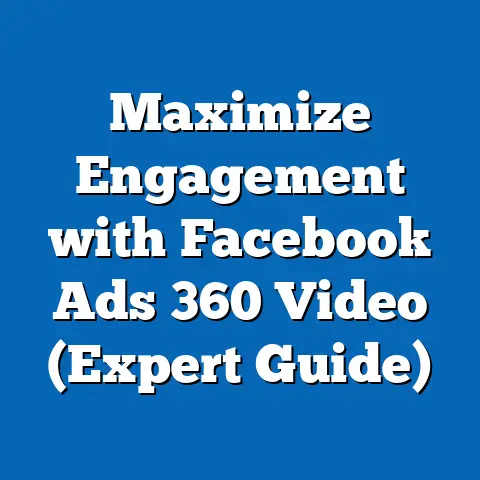Master Frequency Caps on Facebook Ads (Optimize Campaigns)
Have you ever experienced an allergy attack? I have, and let me tell you, it’s no fun. It’s like being bombarded by pollen, dust, or whatever your personal nemesis happens to be. The sneezing, the itchy eyes, the feeling of being completely overwhelmed – it’s a miserable experience. And the key to managing allergies, as any allergy sufferer knows, is careful management of exposure. You avoid the triggers, you take preventative measures, and you learn to control your environment.
Believe it or not, Facebook advertising has a lot in common with managing allergies. Think of your audience as potentially allergic to your ads. Show them the same ad too many times, and they might develop “ad fatigue,” a condition where they become irritated, disengaged, and even develop a negative perception of your brand. Just like you wouldn’t want to overwhelm someone with allergens, you don’t want to bombard your audience with the same ad over and over.
That’s where frequency caps come in. These are like your allergy medication for your Facebook ad campaigns. They’re a powerful tool that allows you to control how often your ads are displayed to the same user. By mastering frequency caps, you can prevent ad fatigue, maintain user engagement, and ultimately, achieve better campaign outcomes. In this article, I’ll guide you through understanding, setting up, monitoring, and adjusting frequency caps to optimize your Facebook ad campaigns for maximum impact. Let’s dive in!
Understanding Frequency in Facebook Ads
Before we jump into the nitty-gritty of frequency caps, let’s first understand what “frequency” means in the context of Facebook ads. It’s a deceptively simple concept, but its implications are profound.
What is Frequency?
In Facebook advertising, frequency refers to the average number of times a single user has seen your ad within a specific timeframe. It’s calculated by dividing the number of impressions (the total number of times your ad was displayed) by the reach (the number of unique people who saw your ad).
Frequency = Impressions / Reach
For example, if your ad had 10,000 impressions and reached 2,000 unique users, your frequency would be 5. This means, on average, each user saw your ad 5 times.
Why Frequency Matters
Facebook tracks frequency because it’s a crucial indicator of ad performance. A low frequency might mean your ad isn’t reaching enough of your target audience or that your messaging isn’t resonating. On the other hand, a high frequency can lead to ad fatigue, where users become annoyed by seeing your ad too often.
I remember running a campaign for a local restaurant. Initially, I was thrilled with the high reach and impressions, but then I noticed the click-through rate (CTR) started to plummet, and the cost per acquisition (CPA) skyrocketed. After digging deeper, I realized the frequency was through the roof – people were seeing the same ad multiple times a day! It was a classic case of ad fatigue, and it was costing the restaurant money.
The Ideal Frequency Range
The “ideal” frequency range varies depending on several factors, including:
- Campaign Objective: Brand awareness campaigns often benefit from a higher frequency than conversion campaigns. The goal is to build brand recognition, so repeated exposure can be beneficial. In contrast, conversion campaigns need to be more targeted and less intrusive.
- Target Audience: A broad audience can tolerate a higher frequency than a highly specific, niche audience.
- Ad Creative: Engaging and compelling ad creatives can withstand a higher frequency than generic or uninspired ads.
- Industry: Some industries, like fast-moving consumer goods (FMCG), may require a higher frequency to stay top-of-mind.
As a general guideline, I’ve found that a frequency between 1.5 and 3 is often a good starting point for most campaigns. However, it’s essential to monitor your campaign performance closely and adjust accordingly.
Consequences of High Frequency
The consequences of high frequency can be detrimental to your campaign and your brand:
- Ad Fatigue: This is the most common consequence. Users become tired of seeing the same ad and start to ignore or even actively dislike it.
- Decreased Engagement: As ad fatigue sets in, users are less likely to click, like, comment, or share your ad.
- Increased Cost Per Acquisition (CPA): When engagement drops, your CPA inevitably increases, as you need to spend more to achieve the same results.
- Negative Brand Perception: If users are constantly bombarded with your ad, they may develop a negative perception of your brand, associating it with annoyance and intrusiveness.
Key Takeaway: Understanding frequency and its potential consequences is crucial for effective Facebook advertising. By monitoring frequency and implementing frequency caps, you can prevent ad fatigue and optimize your campaigns for better results.
The Importance of Frequency Caps
Now that we understand the concept of frequency, let’s explore why frequency caps are so important for maintaining user engagement and preventing ad fatigue.
What are Frequency Caps?
Frequency caps are settings within Facebook Ads Manager that allow you to limit the number of times a user sees your ad within a specific timeframe. They act as a control mechanism, preventing your ads from being overexposed to the same individuals.
Think of it as setting a limit on how many times you can offer someone a free sample at a store. Offering it once or twice might be appreciated, but constantly shoving samples in their face will likely annoy them. Frequency caps work the same way – they ensure your ads are seen enough to make an impact but not so often that they become irritating.
Maintaining User Engagement
Frequency caps are crucial for maintaining user engagement for several reasons:
- Preventing Annoyance: By limiting ad exposure, you avoid annoying your target audience and creating a negative association with your brand.
- Keeping Ads Fresh: Frequency caps encourage you to rotate your ad creatives more frequently. This keeps your messaging fresh and prevents users from tuning out your ads.
- Optimizing Ad Spend: By preventing ad fatigue, you ensure your ad spend is used efficiently. You’re not wasting money showing ads to people who are already tired of seeing them.
Statistics and Case Studies
The impact of frequency caps on ad performance is well-documented. Here are a few statistics and case studies that highlight their effectiveness:
- Facebook: Facebook themselves recommend using frequency caps to optimize ad performance. They’ve found that campaigns with frequency caps often have higher engagement rates and lower costs per acquisition.
- Neil Patel: Digital marketing guru Neil Patel conducted a study that showed reducing ad frequency by 50% led to a 20% increase in click-through rate (CTR) and a 15% decrease in cost per click (CPC).
- Real-World Example: I worked with an e-commerce client who was struggling with high CPA. After implementing frequency caps, we saw a 30% decrease in CPA within just a few weeks. This was primarily due to preventing ad fatigue and ensuring the ads were shown to users who were still receptive to the messaging.
The Psychology of Ad Exposure
Understanding the psychology of ad exposure is key to appreciating the importance of frequency caps. Here are a few key psychological principles to consider:
- Mere-Exposure Effect: This principle suggests that people tend to develop a preference for things they are repeatedly exposed to. However, this effect only works up to a certain point. Beyond that point, repeated exposure can lead to annoyance and disengagement.
- Loss Aversion: People are more motivated to avoid losses than to acquire gains. This means that the negative impact of ad fatigue can be more significant than the positive impact of repeated exposure.
- Cognitive Load: Constantly seeing the same ad can increase cognitive load, making it harder for users to process the information and make a decision.
By understanding these psychological principles, you can appreciate how frequency caps can help you maintain a positive brand association and avoid the negative consequences of overexposure.
Key Takeaway: Frequency caps are essential for maintaining user engagement, preventing ad fatigue, and optimizing ad spend. By understanding the psychological aspects of ad exposure and implementing frequency caps effectively, you can significantly improve your Facebook ad campaign performance.
Setting Up Frequency Caps in Your Facebook Ads
Now that we understand the importance of frequency caps, let’s get into the practical steps of setting them up in your Facebook Ads Manager. It’s a relatively straightforward process, but it’s crucial to do it right to maximize your campaign effectiveness.
Step-by-Step Guide
Here’s a step-by-step guide on how to set frequency caps in Facebook Ads Manager:
- Create a New Campaign or Edit an Existing One: Log in to your Facebook Ads Manager and either create a new campaign or edit an existing one.
- Go to the Ad Set Level: Frequency caps are set at the ad set level, so navigate to the ad set you want to adjust.
-
Optimization & Delivery: Scroll down to the “Optimization & Delivery” section.
- Important Note: Frequency capping is not available for all campaign objectives. It’s typically available for reach and brand awareness campaigns. If you’re using a different objective, like conversions, you may need to adjust your targeting or bidding strategy to control frequency.
- Frequency Cap Option: If your campaign objective supports frequency capping, you’ll see an option to set a “Frequency Cap.” Click on “Show Advanced Options” if you don’t see it right away.
- Set Your Frequency Cap: Here, you can specify the maximum number of times you want a user to see your ad within a specific timeframe. For example, you might set a frequency cap of “2 impressions every 7 days.”
- Review and Publish: Review your ad set settings and publish your changes.
Optimization & Delivery: Scroll down to the “Optimization & Delivery” section.
- Important Note: Frequency capping is not available for all campaign objectives. It’s typically available for reach and brand awareness campaigns. If you’re using a different objective, like conversions, you may need to adjust your targeting or bidding strategy to control frequency.
- Frequency Cap Option: If your campaign objective supports frequency capping, you’ll see an option to set a “Frequency Cap.” Click on “Show Advanced Options” if you don’t see it right away.
- Set Your Frequency Cap: Here, you can specify the maximum number of times you want a user to see your ad within a specific timeframe. For example, you might set a frequency cap of “2 impressions every 7 days.”
- Review and Publish: Review your ad set settings and publish your changes.
Types of Frequency Caps
Facebook offers different types of frequency caps to suit various campaign objectives:
- Daily Frequency Cap: This limits the number of times a user sees your ad per day. It’s useful for campaigns where you want to control daily exposure.
- Weekly Frequency Cap: This limits the number of times a user sees your ad per week. It’s a good option for campaigns where you want to maintain a consistent level of exposure over time.
- Lifetime Frequency Cap: This limits the total number of times a user sees your ad throughout the entire duration of the campaign. It’s useful for campaigns with a limited budget or a specific target audience.
Determining the Right Frequency Cap
Choosing the right frequency cap is crucial for campaign success. Here are a few tips to help you determine the appropriate setting for your campaign objectives:
- Consider Your Target Audience: A broad audience can tolerate a higher frequency than a highly specific audience.
- Analyze Your Ad Creative: Engaging and compelling ad creatives can withstand a higher frequency than generic ads.
- Test Different Settings: The best way to determine the optimal frequency cap is to test different settings and monitor your campaign performance.
- Start Low and Increase Gradually: It’s generally better to start with a lower frequency cap and increase it gradually as needed.
- Monitor Your Metrics: Keep a close eye on your engagement rates, conversion rates, and cost per acquisition. If you see these metrics declining, it may be a sign that your frequency cap is too high.
Key Takeaway: Setting up frequency caps in Facebook Ads Manager is a straightforward process. By understanding the different types of frequency caps and considering your campaign objectives and target audience, you can effectively control ad exposure and prevent ad fatigue.
Monitoring and Adjusting Frequency Caps
Setting up frequency caps is just the first step. To truly master frequency caps, you need to monitor your campaign performance and adjust your settings accordingly.
Why Monitoring is Essential
Ongoing monitoring of frequency metrics in Facebook Ads Manager is essential for several reasons:
- Identifying Ad Fatigue: Monitoring frequency allows you to identify when ad fatigue is setting in. If you see engagement rates declining and costs per acquisition increasing, it may be a sign that your frequency cap is too high.
- Optimizing Ad Spend: By monitoring frequency, you can ensure your ad spend is used efficiently. You’re not wasting money showing ads to people who are already tired of seeing them.
- Improving Campaign Performance: By adjusting frequency caps based on your campaign performance, you can continuously improve your results.
Key Performance Indicators (KPIs)
Here are a few key performance indicators (KPIs) to assess when to adjust frequency caps:
- Frequency: This is the most obvious KPI. Monitor your frequency closely to ensure it stays within your desired range.
- Engagement Rate: This measures how engaged your audience is with your ads. A declining engagement rate may be a sign that your frequency cap is too high.
- Click-Through Rate (CTR): This measures the percentage of people who click on your ad. A declining CTR may also be a sign of ad fatigue.
- Conversion Rate: This measures the percentage of people who take a desired action after seeing your ad (e.g., making a purchase, signing up for a newsletter). A declining conversion rate may indicate that your frequency cap is too high.
- Cost Per Acquisition (CPA): This measures the cost of acquiring a new customer or lead. An increasing CPA may be a sign that your frequency cap is too high.
- Relevance Score: Facebook assigns a relevance score to each ad based on how relevant it is to the target audience. A declining relevance score may indicate that your frequency cap is too high.
Strategies for Testing
Here are a few strategies for testing different frequency cap settings to find the optimal balance for your audience:
- A/B Testing: Create two identical ad sets with different frequency caps and compare their performance.
- Incremental Adjustments: Start with a lower frequency cap and gradually increase it over time, monitoring your metrics along the way.
- Audience Segmentation: Segment your audience based on demographics, interests, or behaviors and test different frequency caps for each segment.
Real-World Examples
Here are a few examples of how brands successfully adjusted their frequency caps for improved campaign performance:
- Example 1: A fashion retailer noticed their engagement rates declining after running a campaign for several weeks. They reduced their frequency cap from 3 impressions per week to 2 impressions per week and saw a significant increase in engagement.
- Example 2: A software company was struggling with high CPA. They segmented their audience based on their level of engagement with the company and tested different frequency caps for each segment. They found that users who were already familiar with the company could tolerate a higher frequency than new users.
- Example 3: A local restaurant was running a campaign to promote a new menu item. They noticed their relevance score declining after a few days. They refreshed their ad creative and reduced their frequency cap, which resulted in a higher relevance score and improved campaign performance.
Key Takeaway: Monitoring and adjusting frequency caps is an ongoing process. By tracking your key performance indicators, testing different settings, and learning from real-world examples, you can continuously optimize your Facebook ad campaigns for maximum impact.
Conclusion
Mastering frequency caps in Facebook ads is essential for optimizing your campaigns and achieving your desired results. Just like managing allergies requires careful attention to exposure, effective Facebook advertising requires careful management of ad frequency. By understanding the concept of frequency, setting up frequency caps, and monitoring your campaign performance, you can prevent ad fatigue, maintain user engagement, and improve your overall campaign effectiveness.
Don’t be afraid to experiment with different frequency cap settings to find the optimal balance for your audience. Remember, there’s no one-size-fits-all solution. The key is to continuously monitor your metrics, adjust your settings accordingly, and learn from your results.
So, take control of your ad frequency today and start experimenting with frequency caps to enhance your Facebook ad campaigns. Your audience (and your budget) will thank you for it!

